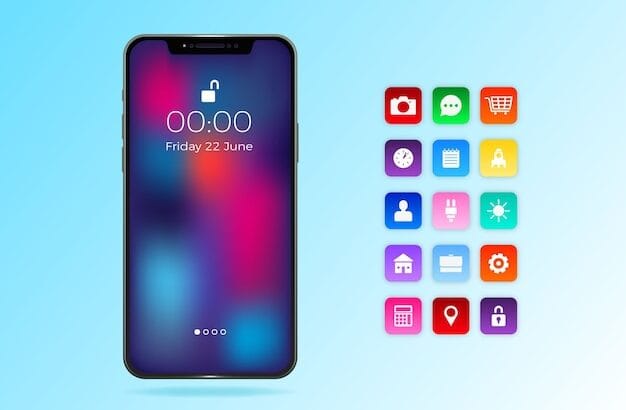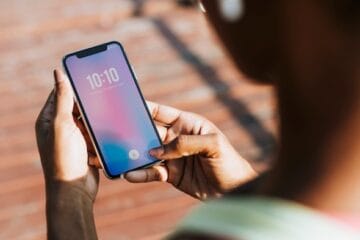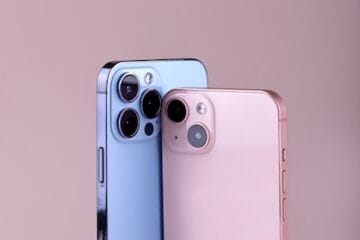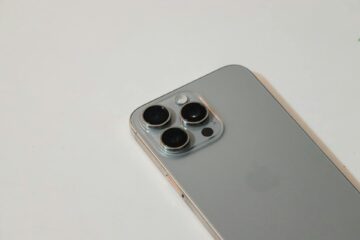
I began this review of the iPhone in the most unusual way possible, by pulling up a map to see where I could put it to the test.
This is due to the fact that Apple’s most recent iPhones are compatible with 5G, the lightning-fast fifth-generation wireless networks, which should allow users to download movies to their devices in a matter of seconds. The issue? The blazingly fast 5G networks aren’t available everywhere.
I experienced this firsthand. I soon learned that my neighborhood in the San Francisco Bay Area lacked a 5G connection when Apple sent iPhone 12s to The New York Times to test on Verizon’s 5G network. In search of the lightning-fast internet speeds that officials from Verizon and Apple had promised at last week’s iPhone unveiling, I set out throughout San Francisco.
The iPhone experience was quite satisfying when I discovered locations where I could connect to the fastest 5G networks. Up to seven times faster download rates than any of the greatest broadband connections I have ever experienced were made available to the phone via the network.
However, the places I managed to locate ultrafast 5G were much less satisfactory. I once discovered the fast connection behind a Safeway parking lot. I was standing in front of a Pet Food Express once more. If I had a super fast internet connection there, what would I do?
Instead, the iPhone used data from Verizon’s “5G Nationwide,” a more generic version of 5G that covers the majority of the nation for the foreseeable future, in most areas of San Francisco. Compared to my prior iPhone, which was on Verizon’s 4G network, those download rates varied from being significantly slower to being twice as quick.
All of this is to say that the network disappointed despite the excitement surrounding 5G. It shouldn’t be the main justification for spending a lot of money on a costly phone right now in a recession brought on by a pandemic.
Even with its brighter screens and more durable build, the iPhone 12 is still a significant improvement over earlier models. However, there will be a premium: The price of the smartphone, which goes on sale this Friday, is $829, which is more than the $699 of the iPhone 11 from last year. (An other model, the $729 iPhone 12 Mini, with a smaller screen, will be available later this year.)
Editors’ Selections
What to Put On Next
I Discentered Males. It’s Harder to Decenter Desire in Men.
An Introduction to the Weight Room
I spent around a week testing the iPhone 12 and the more expensive iPhone 12 Pro, which retails for $999. This is how it transpired.
Picture
The Search for a 5G Phone 5G networks were first deployed by providers like Verizon and AT&T last year, and they have been advertised as being extremely fast. However, they are withholding from you the information that there are two varieties of 5G and that the faster one is not likely to be the one you receive.
In summary, these are the two iterations of 5G:
Millimeter wave, or ultrafast 5G, is available. Google refers to it as “5G Ultra Wideband.” It can only go extremely small distances and finds it difficult to pass through walls and obstructions. This means that although it won’t be suitable for use in our homes or offices very soon, it can be used in outside areas like parks or street corners. As a result, only very small areas of the nation currently have 5G internet.
Then there is the more accessible “5G Nationwide.” Although carriers have stated that it will only be roughly 20% quicker than 4G wireless networks, it travels significantly farther.Opening the Verizon coverage map for San Francisco allowed me to observe the variations in 5G firsthand. Verizon indicated sites with 5G Nationwide in red, and areas with superfast 5G in dark red. Only a few patches of the city were completely dark red; the vast bulk was colored red.
I used the Speedtest app from Ookla, a network diagnostics company, and drove to six areas that Verizon touted as having the fast connection to test ultrafast 5G.
I was let down right away at three of the establishments in the Mission and Marina districts of the city. There was no ultrafast connection to be discovered while I strolled up and down the streets, updating websites and used the Speedtest app nonstop. I was given 4G or plain old 5G connections instead.
When Verizon’s engineers explored the same Marina streets over the weekend, they discovered a rapid 5G connection in one place, but they also confirmed that the signal had deteriorated in the other. (Verizon did not immediately respond to inquiries regarding the Mission area location.)
I came to the conclusion that Verizon’s coverage map was inaccurate as a result.
Nevertheless, I made three more trips by car to places in the Marina, South of Market, and Presidio Heights neighborhoods of the city. I was astounded to discover the rumored ultrafast 5G there at last.
I experienced 5G speeds of up to 2,160 megabits per second while I stood in front of a photography store in South of Market. This is 2,900 times faster than 4G. The 5G iPhone achieved rates of 668 megabits per second, which was 1,052 percent faster than 4G, even in areas where it was slightly slower, such as behind the Safeway parking lot in the Marina district.
Still, these were strange places to have lightning-fast speeds. These were low-traffic locations even prior to the coronavirus outbreak. Although the carriers claimed that rapid 5G connections would be ideal for data-intensive operations like streaming video, I wasn’t really interested in doing any streaming while I was standing on those street corners.
Why the unremarkable places? A Verizon representative, Karen Schulz, stated that the business encountered challenging engineering difficulties in San Francisco. Light pole access is necessary for speedy 5G, yet the majority of the city’s utility infrastructure is subterranean. Red tape has hampered Verizon’s efforts to roll out 5G, she claimed.
There wasn’t much of a speed increase when I tested the new iPhones on the stock 5G network. In optimal circumstances, vanilla 5G outperformed 4G, achieving 209 megabits per second as opposed to 4G’s 103 megabits. However, 5G was slower than 4G in some areas. For example, 5G speeds in one area of the Mission district reached 28 megabits per second, while 4G speeds reached 39 megabits.
Customers should initially anticipate that the 5G Nationwide network will function similarly to 4G, according to Ms. Schulz, and that both coverage and performance will improve over time.
I’m not sure if it is sufficient. Over the previous 12 years, I have reviewed phones and covered the changes from 2G to 3G and 3G to 4G. 5G is just a mess; I have never seen a network rollout this disorganized and inconsistent.




